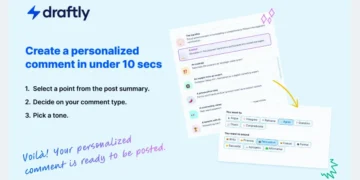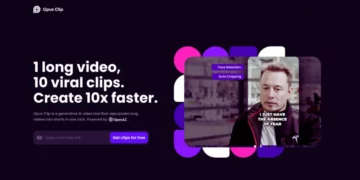Meta has unveiled its latest innovation in AI translation – Seamless Multimodal Machine Translation (SeamlessM4T). This groundbreaking system can translate between languages in both text and voice using a single model.
SeamlessM4T represents a major leap forward for real-time translation by merging multiple data types. Let’s analyze how Meta’s new translator aims to break language barriers and set new standards for inclusive, accurate machine translation.
Introducing SeamlessM4T
In February 2023, Meta introduced SeamlessM4T – an AI translator that supports both text and speech data. Key capabilities include:
- Translating 100+ languages via text or voice input
- Generating text or speech outputs in 35+ languages
- Detecting code-switching between languages to improve accuracy
- Reducing gender bias and toxicity compared to past systems
By handling text and voice seamlessly within one model, SeamlessM4T can enable real-time translation across more mediums. Meta aims to reduce language barriers through this inclusive approach.
In the @MetaAI video, we also saw @sravyapopuri388, and of course, we couldn't resist making her speak in all languages!
Rask's ability to translate a video about @Meta's new translation tool is truly impressive.#Seamless4MT #meta #translation pic.twitter.com/T7wEfaGGGq
— rask.ai (@rask_ai) August 23, 2023
A Multimodal Machine Translation Breakthrough
SeamlessM4T represents a pioneering multimodal machine translation model. Past systems focused on single data types in isolation.
But speech includes helpful cues like tone, emphasis, and emotion. By combining both text and voice, SeamlessM4Thttps://about.fb.com/news/2023/08/seamlessm4t-ai-translation-model/meta can translate more accurately and efficiently in one integrated model.
This comprehensive technique could significantly advance real-time speech translation. It also opens new possibilities for accessibility by converting between text, speech, and multiple languages.
Testing Shows Significant Performance Gains
In benchmarks across metrics, SeamlessM4T demonstrates major improvements over previous best-in-class translation models:
- 20% higher accuracy translating speech to text directly
- 63% less amplified toxicity compared to past systems
- Reduced gender bias in translated pronouns for 100+ languages
- State-of-the-art results translating both text and speech queries
These gains in critical areas like accuracy, inclusivity, and safety underscore SeamlessM4T’s immense potential.
Technical Details and Framework
Meta’s technical paper provides deeper insights into SeamlessM4T’s underlying technology.
To train the multimodal model, Meta utilized:
- 1 million hours of open speech data for self-supervised pretraining
- 406,000 hours of aligned text and speech translation data
- Additional human-labeled and pseudo-labeled datasets
This massive multimodal training corpus enabled unified handling of text and audio. Additional techniques filtered out unbalanced toxicity and bias in the training data.
The model architecture and training methodology set a new standard for versatile, high-performance AI translation.
Why Multimodality is the Future
SeamlessM4T confirms that translating via multiple data types unlocks substantial gains. Some key benefits of multimodal translation models include:
- Utilizing the full contextual richness of voice and audio
- Enabling translation across different mediums seamlessly
- Streamlining workflows by consolidating different translation tasks
- Improving inclusivity by handling diverse inputs and outputs
- Increasing accuracy with complementary signals from each mode
As translation AI continues progressing, Meta’s pioneering multimodal approach points to the future. SeamlessM4T could revolutionize global communication by removing language barriers.
Focused Initially on Advancing Translation Research
To spur innovation, Meta has open-sourced SeamlessM4T on GitHub for researchers. This transparency contrasts with commercial providers offering AI translation APIs as closed proprietary services.
By nurturing an open ecosystem, Meta aims to accelerate breakthroughs in inclusive, accurate multilingual translation. This underscores their mission of developing AI responsibly to benefit society.
Over time, SeamlessM4T could make even casual conversations across languages frictionless and embedded into daily life. But core research must continue improving integrity, safety, and performance at scale first.
Conclusion
With SeamlessM4T, Meta establishes itself at the leading edge of a new era in AI translation. By pioneering multimodal techniques that combine diverse data types, Meta unlocks major gains in accuracy, efficiency, and capability.
This inclusive approach helps break down barriers by translating voice and text fluidly across 100+ languages. Meta’s open research strategy also promises to accelerate innovation toward the dream of seamless global communication.
While more progress lies ahead, SeamlessM4T represents a historic milestone for the field. It expands possibilities for connecting ideas and cultures worldwide.
Frequently Asked Questions
How does SeamlessM4T work?
It uses a single model to translate languages via both text and voice input in real-time.
What are the main benefits?
Greater accuracy, efficiency, language support. Reduces toxicity and bias. Converts between text, voice and languages.
How was the system trained?
Using over 1 million hours of speech data and 400,000 hours of aligned text and voice translations.
What languages does SeamlessM4T support?
100+ input languages. 35+ output languages currently. Support will continue expanding.
Is SeamlessM4T publicly available yet?
It’s currently open-sourced for researchers. Wider release plans are not announced yet.
Follow us on our social networks and keep up to date with everything that happens in the Metaverse!
Twitter Linkedin Facebook Telegram Instagram Google News Amazon Store












































